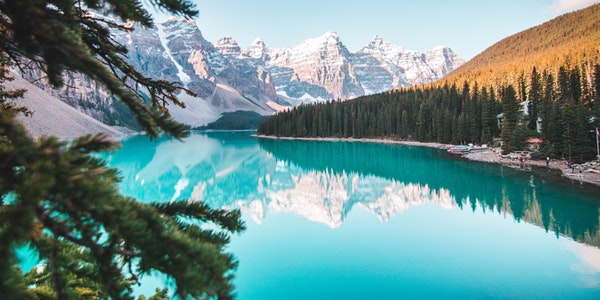Table of Contents
1. Find a Suitable Prospect
To express the sense of three-dimensionality and depth on the screen, the foreground is very important. Pay attention to those terrain elements in front of you, find suitable foreground, and use them to increase the depth of field of the picture.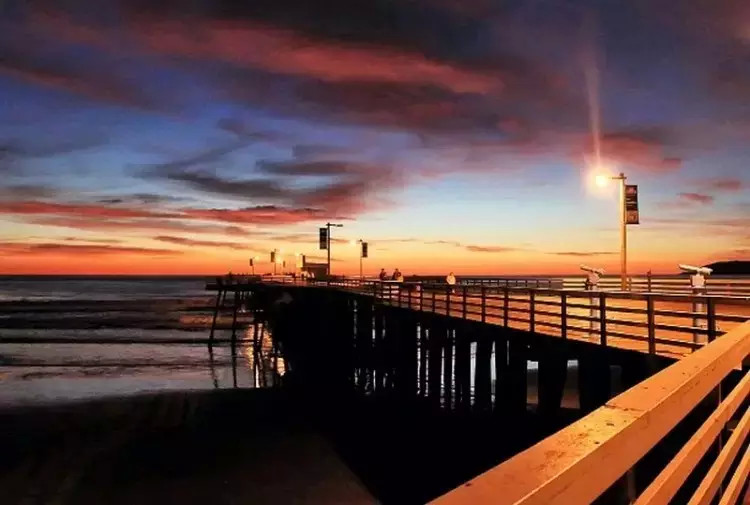
(1) Use striking foreground elements
When you have chosen a scene to shoot and look around for elements that are suitable for the foreground, you can arrange some foreground elements that lead the line of sight, such as a bunch of grass or a patchwork of rocks. Use them to add depth to your photos, creating a three-dimensional feel. The use of a strong foreground can bring out the size of the scene, let the viewer know about the relative dimensions of the various parts of the scene, see the detailed details of the scene, and can better show the middle ground and the expansive background in the distance.
(2) Reasonable use of some guiding lines
In shooting, if you can find the hidden guide lines of the scene in the viewfinder, you can make the picture more exciting. Before shooting, ask yourself “What elements of this image interest me the most?” Consider how to create the most perfect image. Common scenery such as paths, bridges, fences, etc. can also be used as the foreground of the picture. At this time, the viewer’s line of sight will extend along this vein in the picture to the distant view.
Foreground Composition Rules
Look carefully at the foreground, find points of interest and use compositional rules to lay out the picture, such as the rule of thirds, symmetrical composition, or the golden ratio.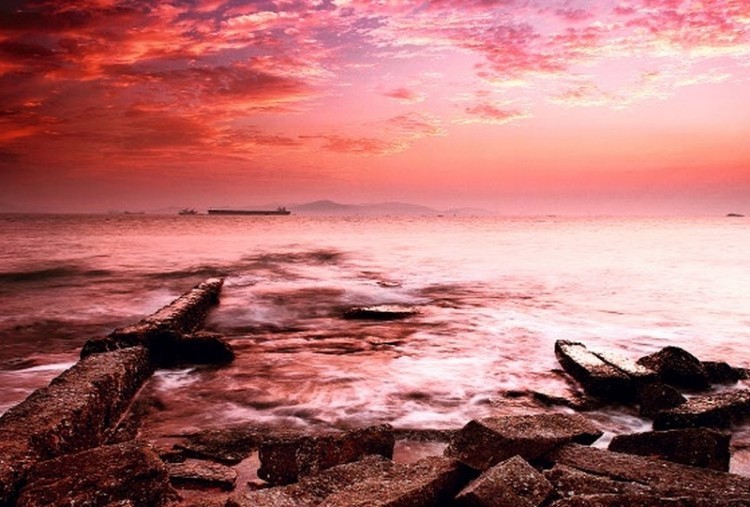
(1) The foreground occupies one third of the screen
It is crucial to grasp the area that the foreground occupies in the picture. If you want the foreground to be the main body of the frame, you need to think more carefully about its placement. We are accustomed to arranging the foreground in the lower third of the frame, and this kind of photo has a strong visual impact. Don’t choose a foreground that is too complicated, though, as it will distract the audience from the subject.
(2) Symmetrical composition
Symmetrical composition is also a commonly used composition rule. The role of placing the foreground is to fill the gap at the bottom of the picture and make the picture feel more layered. For example, if you arrange the distant view at the top of the screen, then place the foreground at the bottom of the screen.
Foreground components work more effectively if they intersect or protrude into more distant objects (including the sky), making the composition appear tighter. Just because you’re taking landscape photos doesn’t mean you’re limited to the narrow scope of landscapes. Remember to try more!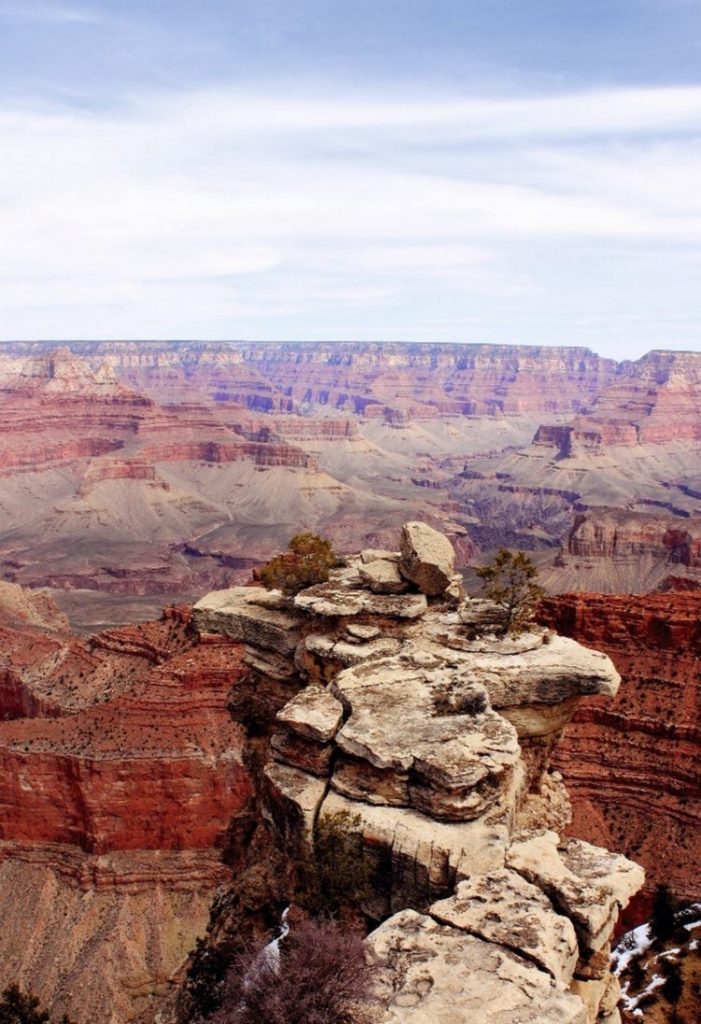
Tips for photographers:
When shooting landscapes, we use a very small aperture, which reduces the shutter speed to 1/15th of a second or slower. In order to ensure a clear picture, be sure to use a tripod, a cable release or the camera’s time-lapse function.
(1). Stable tripod
Hang a rock bag (or a backpack) on the center of the tripod to prevent sudden winds from affecting stability. If you have a level on your tripod, use it to make sure the composition is level. Remember to secure the camera as tightly as possible.
(2). Exposure bracketing
Usually you should choose the center-weighted metering method, and then take the exposure bracketing, each time ± 1/2 stop or less, at most overexposure or underexposure by one stop.
Proper Use of Lenses and Depth of Field
You can use a wide-angle lens, choose a small aperture, and then set a reasonable focal length to obtain the maximum depth of field, so that the foreground and distant scenery in front of the lens are clearly captured.
(1) Control the depth of field
With aperture priority mode, there is an opportunity to create different depth-of-field effects. To get a wider in-focus imaging range, choose a small aperture of F11~F22. And then use the manual focus mode to set the focus between the middle and foreground. If the foreground is 1 meter away from the camera, setting the focus at about 2 meters will make both the foreground and the distant view clear. Sometimes you can also try to take creative pictures with a shallow depth of field, and you will have a different harvest.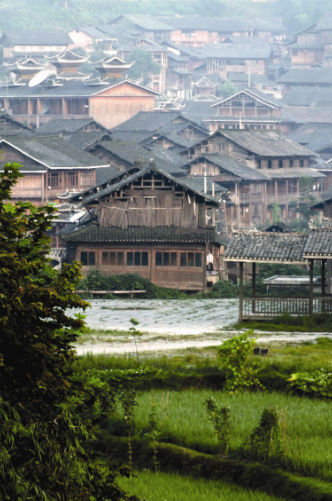
Shooting Tips:
(i) When using a wide-angle lens, be careful not to include the tripod and your own shadow into the picture. This problem can be avoided by choosing side lighting and a suitable shooting position.
(ii) If you like creativity, why not try a shallow depth of field? Open a large aperture to clearly image the foreground, and after the complex environmental background is blurred, the picture is much simpler. Use playback to check your images after shooting to ensure sharp details and vivid colors. Shooting in RAW format is recommended if the camera allows and the memory card capacity is sufficient.
(2) Use the wide-angle lens skillfully
Using a wide-angle lens can highlight the depth and depth between the foreground and the background. It allows the photo to gain a greater depth of field. Another benefit of a wide-angle lens is that it can exaggerate the perspective of the photo and make the foreground more exaggerated. Of course, shooting is not set in stone. In actual shooting, according to different needs, choose different focal lengths of lenses and shooting distances.
Light and Angle
When photographing a scene, the angle of the shot is also important to understand the source of the light and the effect of the intensity of the light. Choose a low angle and make good use of the effect of light on the foreground. That can create a good sense of depth in the picture.
(1) low-angle shooting
Shooting the foreground from a high angle will make the picture less effective. Try a low angle when shooting. Keep the angle of view level with the foreground and adjust the tripod height to find the best angle for the shot. If the tripod is too low, the scene will look flat. If the tripod is too high, the foreground may appear skewed. 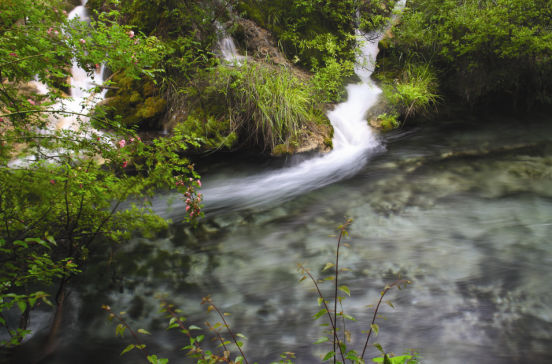
It should be noted that many photographers use wide-angle lenses with the foreground very close to the lens. At this time, it is necessary to adjust the angle and distance appropriately. And do not let the exaggerated foreground interfere with the beauty of the whole picture.
(2) The effect of light on the scene
If it is morning, evening or cloudy, the foreground is darker. If the sunlight is strong and the object in the foreground is light in color, a picture effect with a dark background and a light foreground will be formed. So that the foreground is more eye-catching.
Shooting a scene with frontal light can make the scene clear and have a bright and vivid atmosphere. But the frontal light will make the scene lack three-dimensional effect. Using side light to shoot the scene, due to the oblique light, the scene will naturally show light and dark lines, resulting in a three-dimensional effect. The scene has a three-dimensional sense, and the tones of the background are not easily confused with each other.
When shooting, the neutral gray part of the picture is used as the keynote for metering. So that the layers of the dark parts of the scene can be fully displayed, making the picture rich in layers. Side light can express levels and lines, which is more suitable for shooting.
